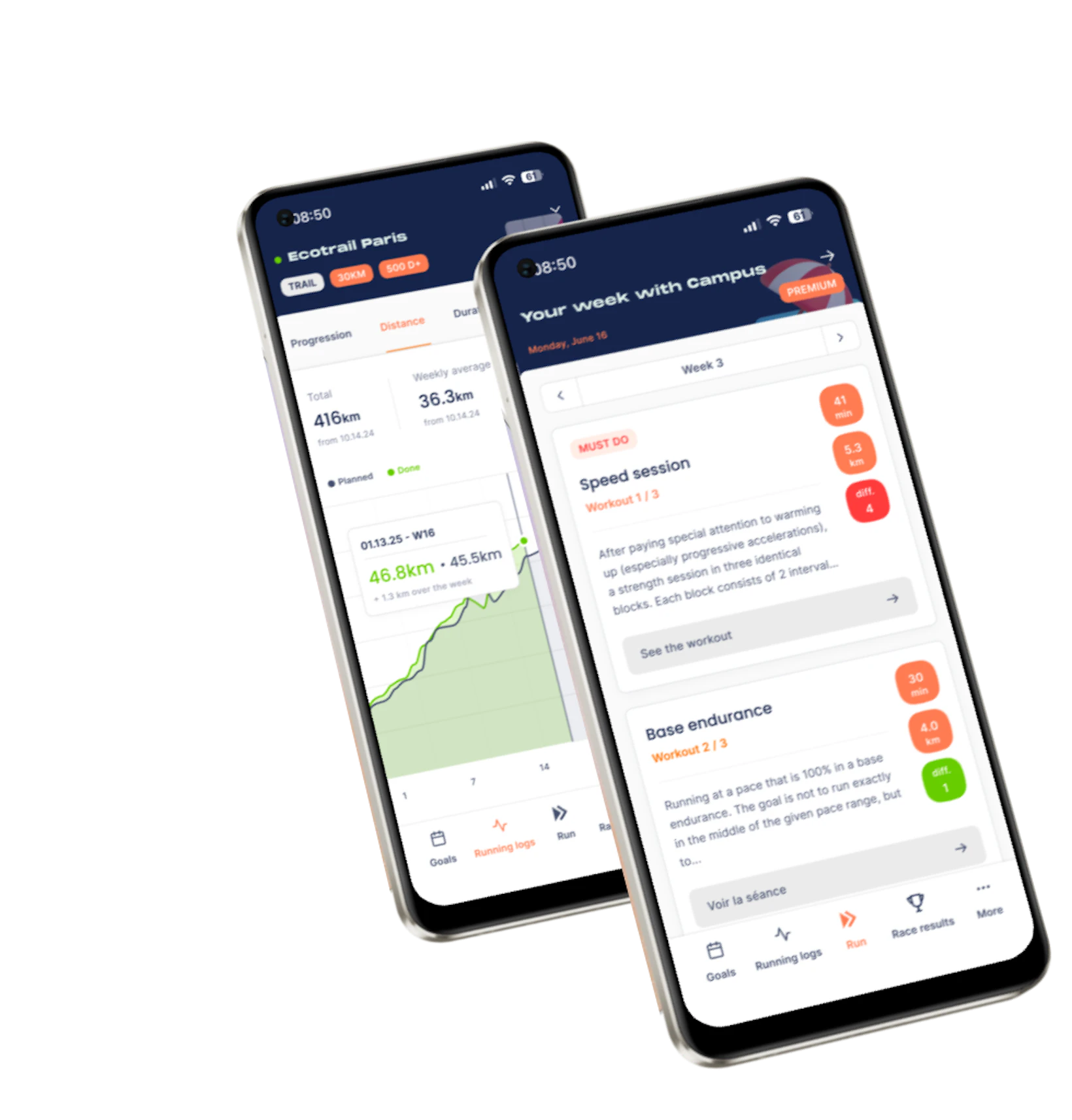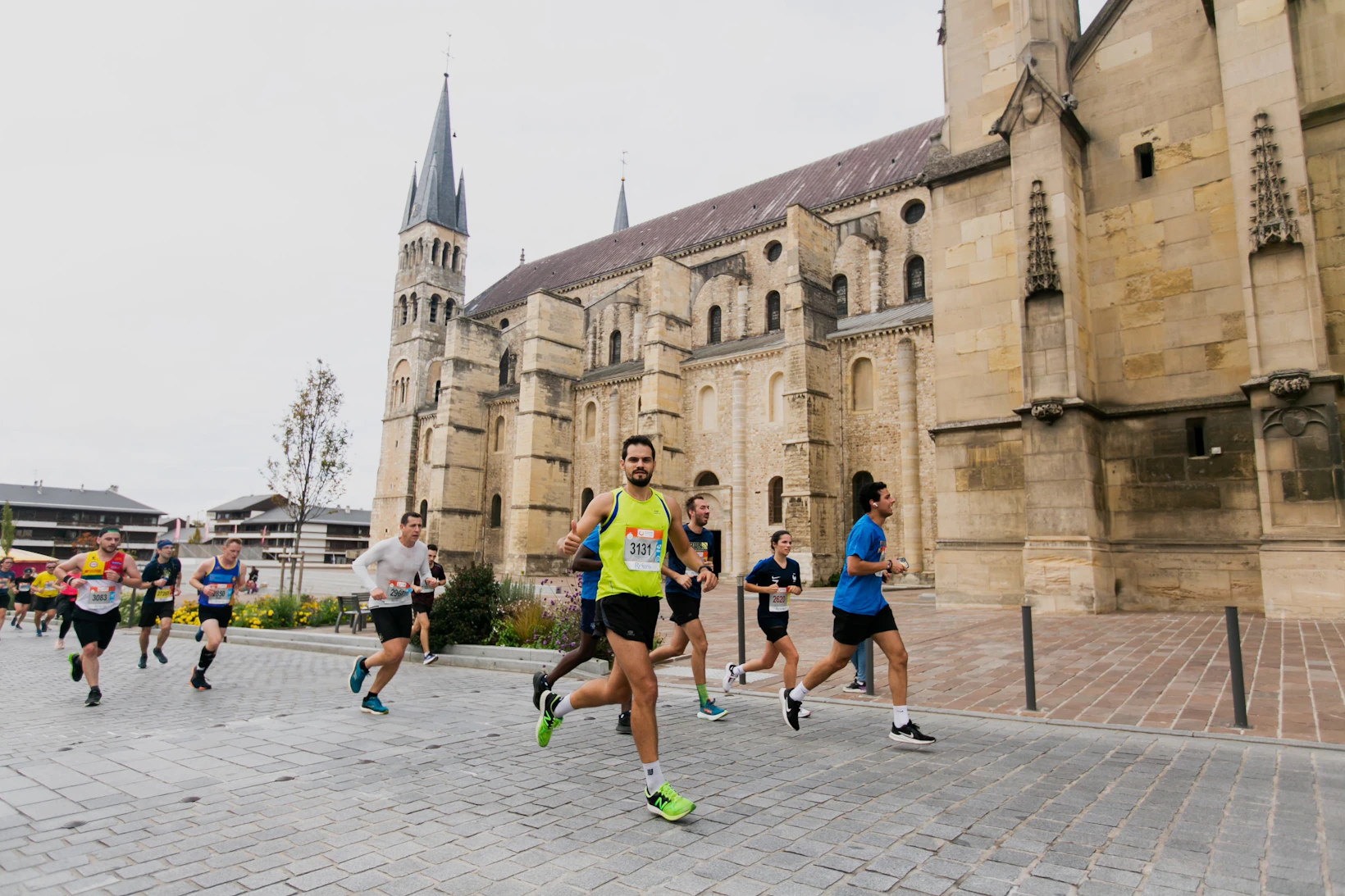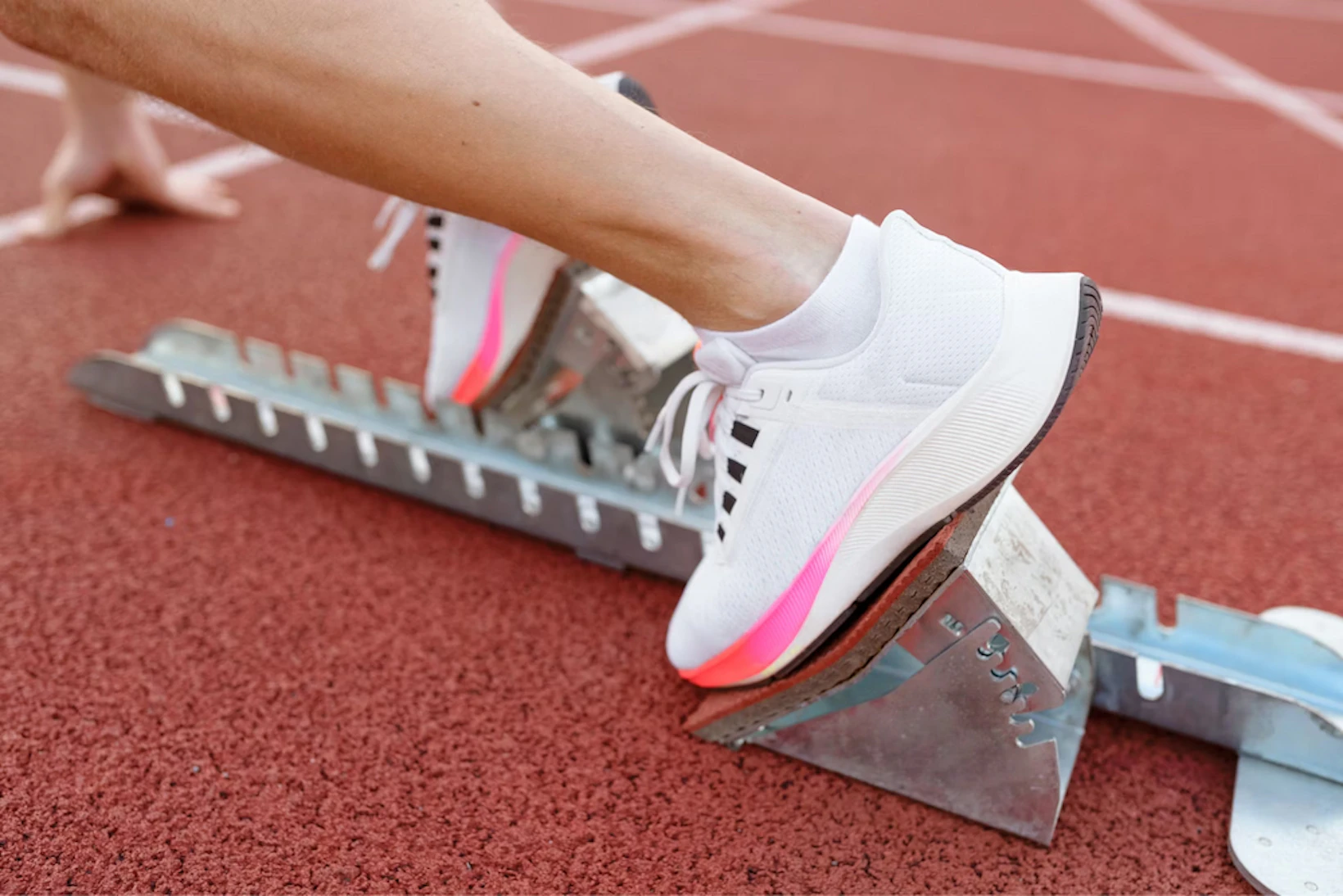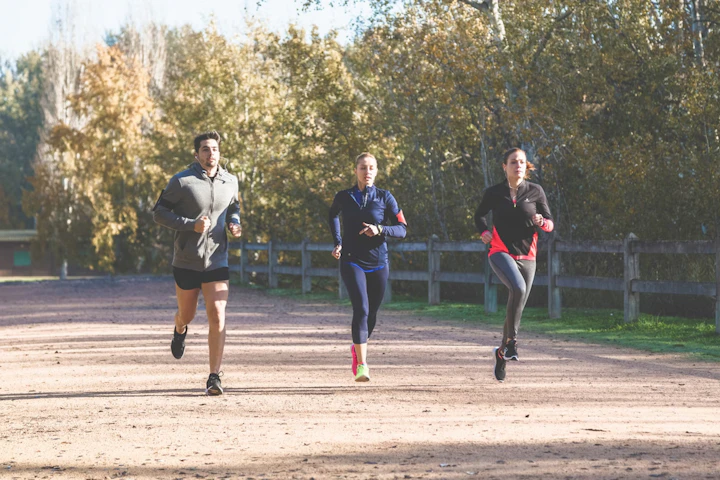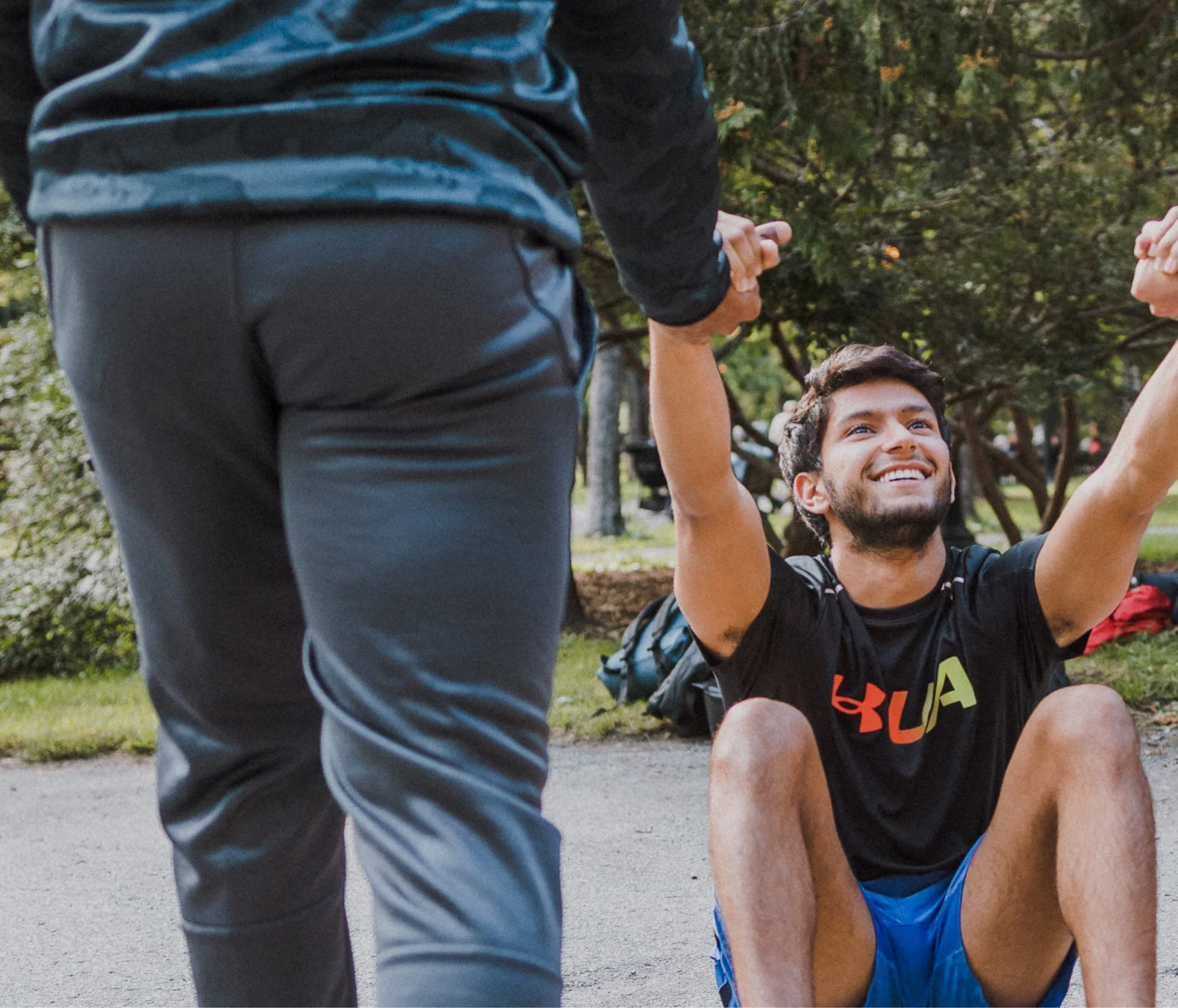The test workout marathon: the rehearsal before the big day
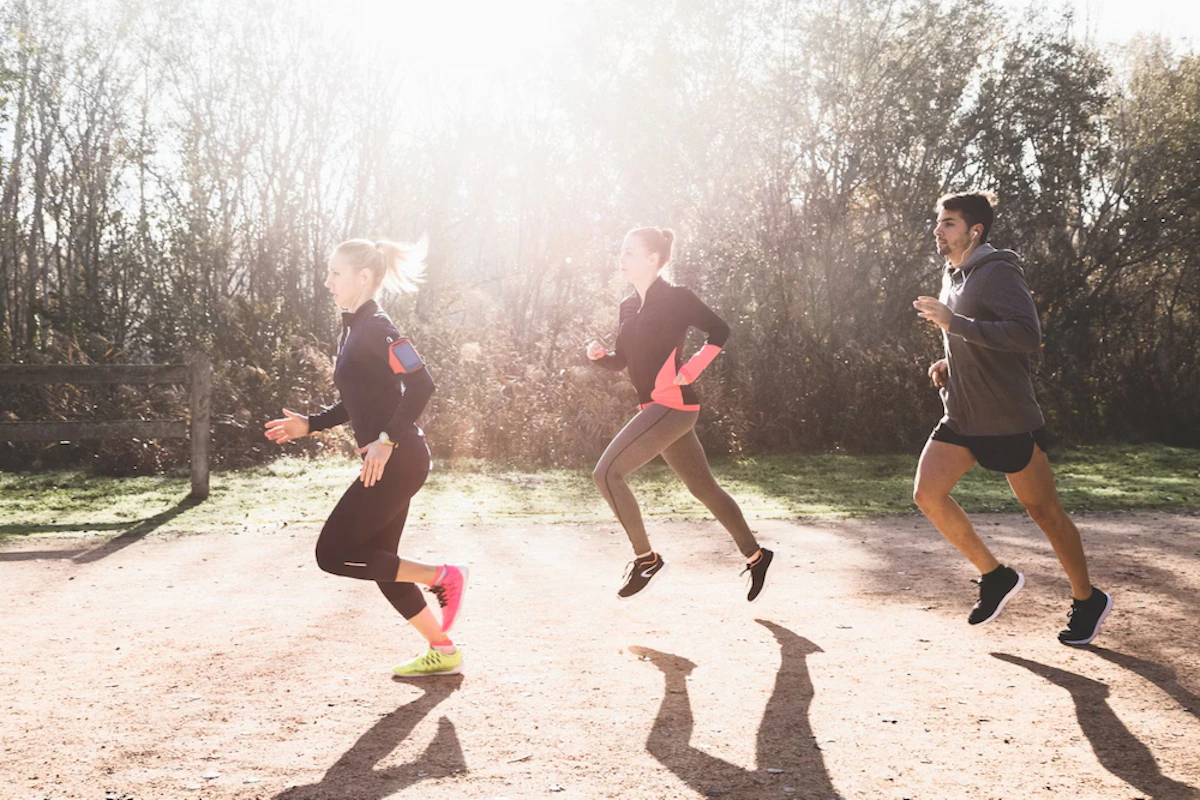
14 min read
Summary
How to know if you are ready to do a marathon? 🤷🏽♂️
Follow a training plan 🤓
What is the average preparation time for the marathon challenge? ⏳
Self-evaluate through test workouts 📈
When to do your marathon test workout? 📆
What test workout to choose to test your marathon pace and best prepare for your marathon? 🔎
The Bart Yasso test (interval of at least 10 km) 🧐
The long run as a test workout 💥
Test your specific marathon pace during a half-marathon 🏃
Make your test workout a full dress rehearsal 🎭

Receive advice from our passionate coaches!
You set yourself the goal of running a marathon and you'd like to know if you can maintain your target race pace for the entire distance (that is, 42.195 kilometers)? We guide you in discovering the famous workout tests, those that give you an overview of how the big day will go! You'll also see that it's not just about testing your pace but also putting yourself in real race conditions. In short, the marathon test workout acts as a genuine dress rehearsal. It helps to boost your confidence and assess what's left to work on so you can enjoy your entire race and cross the finish line with a smile. Shall we get started? 😃

How to know if you are ready to do a marathon? 🤷🏽♂️
Running a marathon is no small feat. The format of 42.195 kilometers is indeed significant, and it's essential to properly prepare your body and mind for this intense and challenging effort. So, if you're wondering if you can run a marathon and are currently seeking a good marathon plan to help achieve this goal, we're pleased to tell you that you're in the right place! Here, we explain how to conduct a quality workout to lead you to the finish line and how the test workout can reassure/guide you in your preparation.
Follow a training plan 🤓
It's simple (and not mean): Doing your best to follow your workout plan (according to your abilities, desires, and feelings) is not optional if your goal is to run a marathon while having a great time. Needless to say, without adequate preparation, the marathon can become a real ordeal… but rest assured, regardless of the experience, the vast majority of runners go back for more. What can I say, the marathon has an attraction we simply can't reasonably resist, despite our efforts! 🙈
During your marathon plan, you may identify different phases: the development phase, the specific phase, and the tapering phase. These are essential steps to be built progressively at varying intensities. Again, if your goal is to cross the finish line having given the maximum of your abilities while being proud of yourself, it's crucial to follow a plan adapted to your needs (and unless you're a certified coach, that isn't made up!).
Throughout your marathon prep, the three phases of training target and allow you to work on different qualities and physical aspects that will bring you to be at your best on race day.
The development phase focuses on building and reinforcing your physical base to best prepare your body to withstand the mechanical stress generated during the specific phase next.
Then, the specific phase zeros in on skills increasingly tailored to your needs concerning the marathon. You'll particularly develop this famed marathon pace during various sessions, including long runs (intended to be extended more and more progressively over the weeks).
Finally, the tapering phase is responsible for fine-tuning your physical condition in preparation for the race by getting plenty of energy.
Adhering as strictly as possible to this training sequence (while knowing how to listen to yourself) ensures optimal preparation for tackling your marathon challenge! And to approach the end of your preparation as best as possible, don't hesitate to read and apply our tips to maximize your physical shape just before your marathon.
What is the average preparation time for the marathon challenge? ⏳
The duration of your marathon preparation is, of course, decisive regarding your capability to complete this challenge. It depends on several factors:
Your sporting experience, particularly in running. For example, the less experience you have, the more a long-term preparation is preferable to gradually bring you to your goal. If you're an experienced runner, know that long preparation is also a recommended option as it will give you time to properly develop your specific marathon pace.
Want to complete a marathon with no time goal? On the other hand, do you have a specific time in mind and/or want to beat your personal record? The more ambitious your goal, the more a long-term training program is preferable to prepare you for achieving it.
The time you can dedicate to your preparation.
And your motivation when it comes to engaging in a complete training program.
At Campus, we offer training plans ranging from twelve weeks to twelve months to help you arrive as prepared as possible at the starting line.
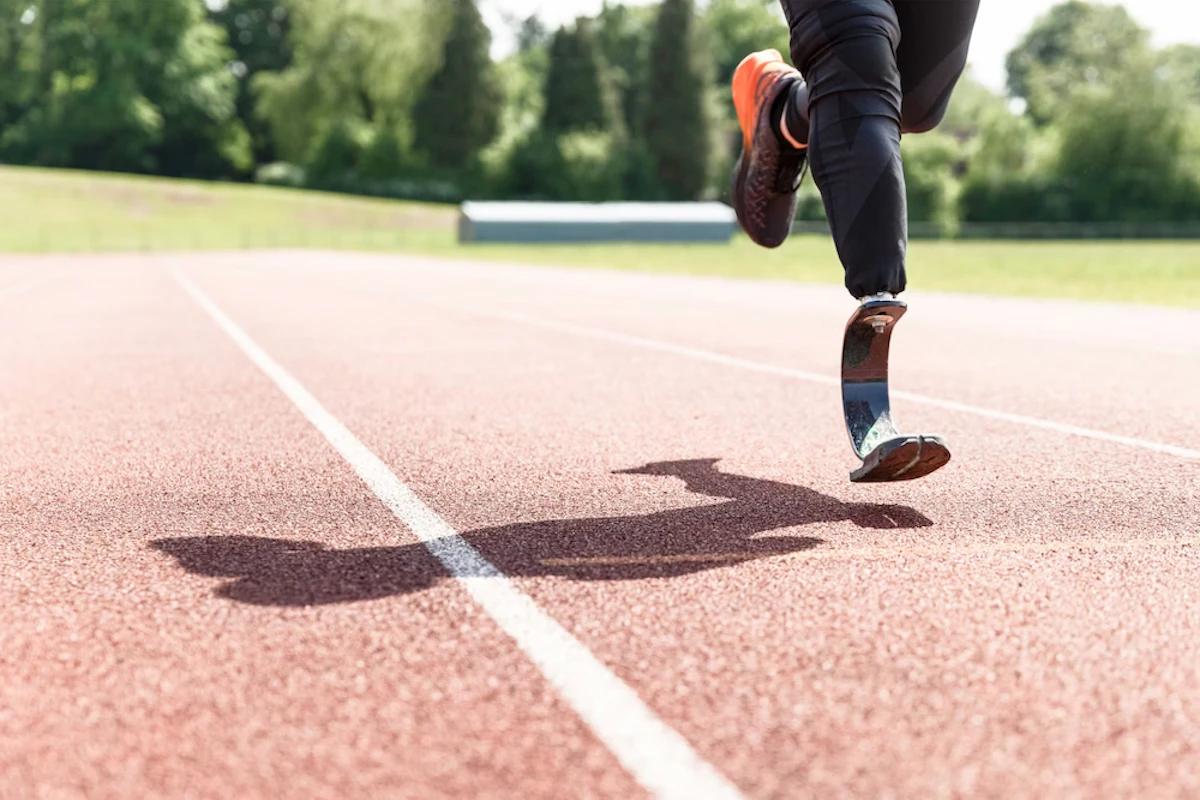
Self-evaluate through test workouts 📈
Of course, if your program suggests doing long runs to train/get used to accumulating kilometers and increasing endurance during the specific phase of your workout plan, you'll discover the marathon test workouts. These are key workouts done at a specified pace calculated based on the time you wish to achieve on your marathon. The purpose of these workouts is to test yourself on distances of varying lengths, observe your heart rate and sensations, and compare them to your previous marathons - or against generic benchmarks like a heart rate between approximately 80 and 85% of your Maximum Heart Rate. The test workouts will also build your confidence and are valuable indicators of whether you're ready for your goal or still have work to do (don't forget that preparation aims to gradually bring you to your goal, so if your first specific workouts don't seem conclusive: no worries, your crescento progress is planned). Finally, if you realize that the specific pace you chose is too difficult to maintain, you can always adjust your goal.
When to do your marathon test workout? 📆
The main test workout generally takes place three weeks before your marathon. This timing is chosen because, by then, your body is typically trained, in good condition, and almost at its shape peak. Moreover, the three-week gap allows ample recovery before race day.
What test workout to choose to test your marathon pace and best prepare for your marathon? 🔎
Did you know you can test your marathon pace and experience race conditions at times other than long runs? Some specific pace interval workouts are also very effective for practice. Runners each have their preferences for test workouts. During your Campus training plan, you will have the opportunity to test several types of workouts: pace variation, threshold work, and of course, long runs.
The Bart Yasso test (interval of at least 10 km) 🧐
According to Bart Yasso, an American coach, there's a specific interval workout designed to gauge marathon timing and test the targeted pace. This specific workout involves running ten times 800 meters at the best possible average with an active recovery of a few minutes over 400 meters between each 800 meters.
According to Bart Yasso's theory, someone who runs 800 meters in 4 minutes 30 will run the marathon in 4 hours 30; a similar pattern applies to someone taking 3 minutes 20 to cover 800 meters (average time over ten repetitions), who would then have a marathon time of 3 hours 20, and so on. However, this test has limitations—it is not precise enough to provide a target pace to the second, which is why we don't use it at Campus. The timing assessment disclosed through this test should be taken with caution as exercise conditions may vary. And while the Bart Yasso test offers a good estimation of an athlete's overall physical condition, other criteria like durability or training specificity can lead to significant variations in the result (often downward). Thus, if you absolutely want to try it, you can place this workout in context with your sensations and heart rate (if you have the means to measure it).
🎙️ Coach Tristan's advice:
Personally, I rarely use this workout. Because it's supposed to be run at a 100% effort rating, it can sometimes unnecessarily overtire athletes (especially with a moderate mileage of more or less under 80 kilometers per week).

The long run as a test workout 💥
A possible option is to conduct your test workout during a long run. Bear in mind it should be done at the end of a training cycle, three weeks from a marathon goal, thus marking the completion of a substantial block of work and the (almost) completion of your preparation. Place this workout at this point in your training plan allows you to run under pre-exhaustion, simulating the fatigue you'll experience on race day after x kilometers covered. Besides, if you properly execute your preparation, follow the tapering period, are in ideal physical and mental condition on race day, and the external conditions suit you, you'll likely not feel any fatigue at the start of your marathon. By being in full possession of your means and in an optimal state of freshness, you’ll be able to achieve the time you want while having better sensations than during your test workout.
Of course, this isn't an exact science; sometimes you feel better on your test workout day than on race day. As we've mentioned, conditions conducive to performance depend on many factors, some of which can't be controlled (weather, illness, motivation, a bad night's sleep, etc.). This is the harsh law of sport, but it's also the one that teaches us humility and perseverance.
➡️ The long run as a test workout, in practice:
This will be the longest run of your preparation, approximately 2 hours 30 minutes.
To start, do about 1 hour 15 of easy running at approximately 75% of your Maximum Heart Rate.
Then, perform two blocks of 30 minutes of running at marathon pace interspersed with a two-minute recovery time.
Our advice: If you're equipped with a watch, check your pace and heart rate on it. Try to run while relaxation.
➡️ Goals of the long run as a test workout:
Test your marathon pace and your ability to handle the distance.
Because it's extremely challenging for your body and mind, this workout is the best indicator of your current fitness state.
It's the perfect opportunity to validate your nutritional strategy (though as each food/drink should be tested before your race, it's better to use them throughout your preparation).
Test your specific marathon pace during a half-marathon 🏃
To be able to test your marathon pace during a competition, like a half marathon, the most important thing is not just being well trained but also showing wisdom and restraint. Indeed, it is very easy to get carried away by the euphoria of an official race setting and fall into a trap. Remember that before being at a race venue, we're here primarily to perform a test workout. You must be keenly aware of your priorities and not confuse your goal just a few days from the competition you're truly training for.
Your test workout must be fully performed at your marathon pace, even if you want to go faster and feel you still have more to give: on the contrary, it bodes well for this final stretch before your next marathon!
➡️ The competition as a test workout, in practice:
During this workout, you'll again need to cover 2 hours 30 minutes of running. So, if you plan to run your half marathon in 2 hours, you can do 30 minutes of easy running before the race starts.
If you have a watch, remember to monitor your pace and heart rate, and try to stay as relaxed as possible.
Of course, it's not easy to let others pass you, but it's essential if you want to be in top form on your marathon day.
➡️ The goals of the competition as a test workout:
Test your marathon pace and your ability to endure the distance.
Run in a more fun and engaging format than what the solitary long run offers.
Nutrition, energy drinks, gear, etc.: Take the opportunity to do everything as you will on your marathon day.
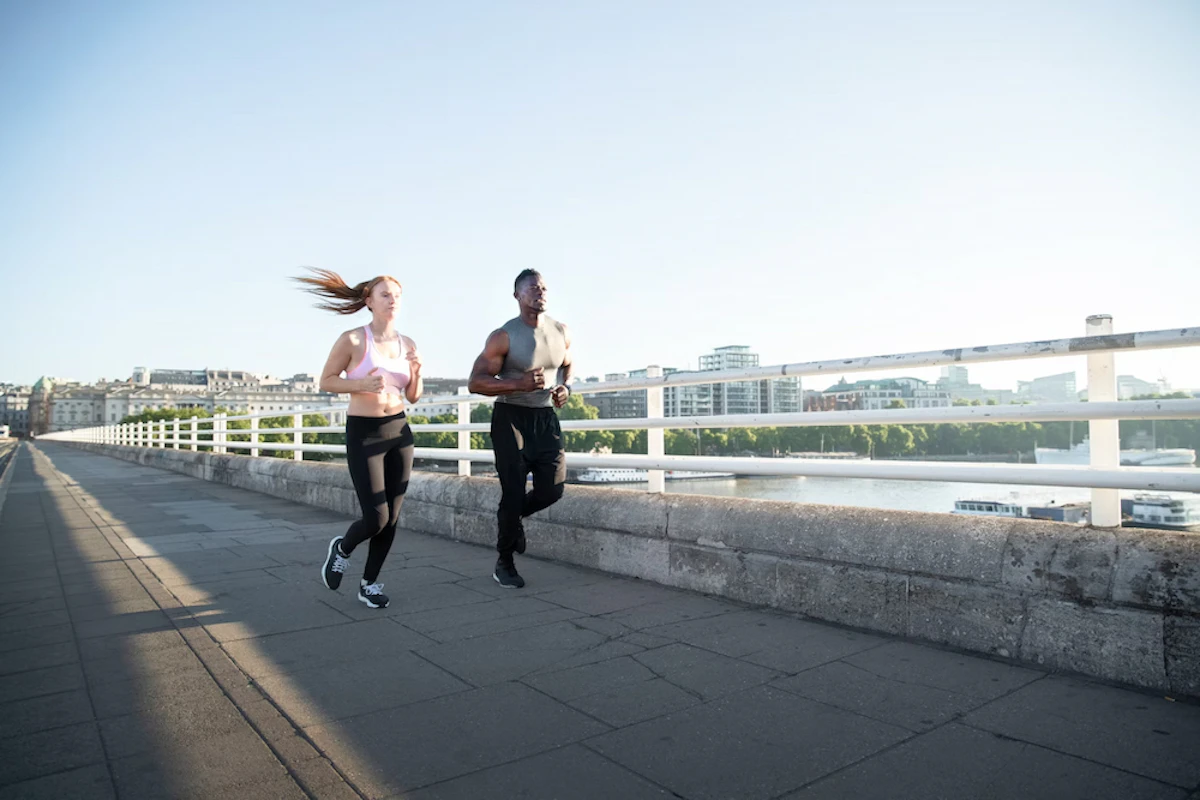
Make your test workout a full dress rehearsal 🎭
It's clear that the purpose of the marathon test workout is to put you in real race conditions. A sort of dress rehearsal to make final adjustments and really see where you're at. This is the ideal time to finalize your race-eve meal, pre-race breakfast, outfit (such as socks, cap, and shorts you'll wear), and so on. By setting all these parameters to the ones you will reproduce on your race day So you maximize your chances of succeeding on the J day!
*Obviously, your gear as well as your fueling must have been tested, gradually introduced, and validated during your preparation, and not just on the day of your test workout, let alone your marathon.
The goal of the test workout ultimately goes far beyond just physical evaluation. It is also there to mentally prepare you for the legendary event that’s quickly approaching! Also, if you find yourself at the venue of your race, you can choose to explore certain sections of the marathon course to avoid being surprised on the big day… or prefer to leave yourself some surprises if that brings you joy!
So, tell us, from the long run in solo (or in a group) to the half-marathon in competition, what is your preferred option for a test workout? 60e




